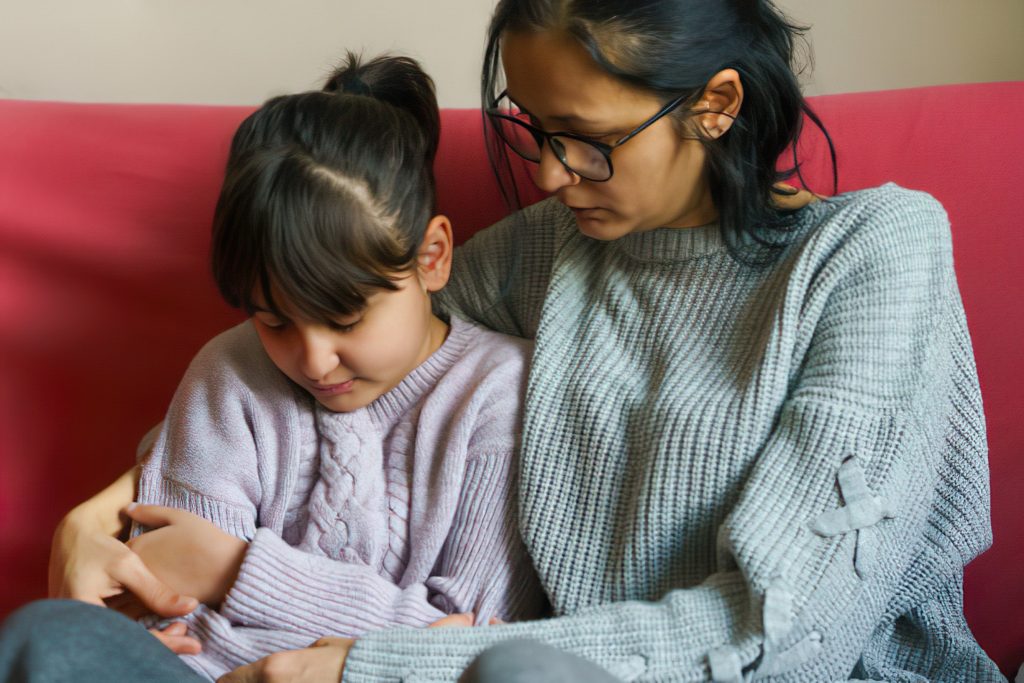As parents, we all want to have strong, positive relationships with our children. But sometimes, communicating with them can be challenging. We may feel like we’re not connecting or that they’re not listening to us. This is where the power of active listening comes in. Active listening is a skill that can help us build deeper connections with our children, improve communication, and enhance our overall relationship. In this blog post, we’ll explore 10 ways to practice active listening with children and show how it can help us overcome communication barriers and build stronger, more fulfilling relationships with our kids. So, whether you’re a new parent or have been raising children for years, let’s discover the power of active listening and unlock its benefits for your family.
Benefits of Active Listening
Here are some benefits of active listening:
- Better Communication: Active listening helps you to understand what the other person is saying and convey your thoughts more effectively. This can lead to more productive conversations and reduce the chance of misunderstandings.
- Increased Trust: When you actively listen to someone, it demonstrates that you care about what they have to say. This can help build trust and strengthen your relationship.
- Deeper Understanding: Active listening can help you gain a deeper understanding of the other person’s perspective, experiences, and feelings. This can help you empathize with them and respond in a way that is more meaningful and helpful.
- Improved Problem Solving: Active listening can help you identify the root cause of an issue and work together to find a solution that works for everyone involved.
- Reduced Conflict: When you actively listen to someone, it can help de-escalate conflict and reduce the likelihood of arguments or disagreements.
- Positive Impact on Mental Health: When you feel heard and understood, it can have a positive impact on your mental health. Active listening can help reduce stress, anxiety, and depression, and promote overall well-being.
- Enhanced Creativity: Active listening can stimulate creativity by exposing you to new ideas, perspectives, and experiences that you may not have considered before.Overall, active listening can have a profound impact on the quality of your relationships, your personal growth, and your overall happiness and well-being.
1. Giving your undivided attention
Giving your undivided attention is a key aspect of active listening. When you’re engaging with your child, it’s important to be fully present and give them your full attention. This means putting away distractions like your phone, computer, or television, and focusing on the conversation at hand.

When your child feels like you’re genuinely interested in what they’re saying, they’re more likely to open up and share their thoughts and feelings. In addition, giving your undivided attention shows your child that they’re important to you and that you value their opinions. This can help strengthen your bond and build trust, which can have a positive impact on your relationship in the long run. So, make an effort to eliminate distractions and give your child your full attention when you’re having a conversation. You’ll be amazed at how much of a difference it can make!
2. Asking open-ended questions
Asking open-ended questions is another effective technique for practicing active listening with children. Open-ended questions are designed to encourage conversation and elicit more detailed responses from your child. Unlike closed-ended questions that require a simple yes or no answer, open-ended questions are more thought-provoking and require your child to think and express themselves more fully.

By asking open-ended questions, you can gain a deeper understanding of your child’s thoughts, feelings, and experiences. It also demonstrates that you’re genuinely interested in what they have to say, which can help strengthen your relationship. Some examples of open-ended questions include “How did that make you feel?” or “What was the best part of your day today?” So, the next time you’re having a conversation with your child, try asking open-ended questions to spark more engaging and meaningful conversation.
3. Paraphrasing what your child says
Paraphrasing what your child says is a crucial aspect of active listening. It involves restating what your child has said in your own words to demonstrate that you understand their message. Paraphrasing can help children feel heard and valued, and it can also prevent misunderstandings. By reflecting their words back to them, you give your child an opportunity to clarify or correct any misconceptions you may have.

This technique shows your child that you are fully engaged in the conversation, and that you respect their thoughts and feelings. Paraphrasing also encourages children to continue sharing their ideas and emotions with you, ultimately leading to stronger communication and deeper connections.
When paraphrasing what your child says, it’s important to focus on their emotions, rather than just the content of their message. This means reflecting on the feelings your child is expressing, as well as the words they are using. By doing this, you can show your child that you understand how they are feeling and that you are truly listening to them.
For example, if your child says, “I’m really upset because my friend didn’t invite me to their birthday party,” you could respond by saying, “It sounds like you’re feeling left out and disappointed that you didn’t get to go to the party.” This demonstrates that you have not only heard the words your child said, but also understood the emotions behind them. Paraphrasing can be a powerful tool for building empathy and trust between you and your child, ultimately leading to a stronger relationship.
4. Validating their feelings
Validating your child’s feelings is an important part of active listening. When your child expresses their emotions, it’s crucial to acknowledge and accept their feelings, even if you don’t agree with them.

Validating your child’s feelings shows that you respect their perspective and are willing to listen without judgement. It can also help your child feel more comfortable opening up to you in the future.
One way to validate your child’s feelings is by using phrases like, “I can see why you feel that way,” or “It sounds like you’re feeling frustrated/sad/angry/etc.” By acknowledging your child’s emotions, you can build a stronger bond with them and help them feel heard and understood.
5. Reflecting on your own emotions
Reflecting on your own emotions is an important aspect of active listening that can help you connect more deeply with your child. When your child shares their feelings or experiences, it’s natural to have your own emotional reactions.

However, it’s essential to acknowledge and process these reactions before responding to your child. By taking a moment to reflect on your own emotions, you can better understand how they might be influencing your communication and avoid projecting them onto your child.
Additionally, reflecting on your own emotions can help you respond more empathetically and supportively, which can enhance your child’s trust in you and strengthen your relationship.
6. Avoiding distractions
One of the key elements of active listening is avoiding distractions when you’re communicating with your child. This means that you need to give your child your full attention and be fully present in the moment. When you’re distracted by other things like your phone or other electronic devices, you’re sending the message to your child that they are not a priority in that moment. To show your child that they are important and valued, turn off all distractions, including your phone, laptop, or TV. This way, you can focus solely on what your child is saying, and give them your undivided attention.
Distractions can take many forms, not just electronic devices. Other environmental factors such as a loud TV or radio, people walking by, or even your own thoughts and worries can also cause distractions. It’s important to be aware of these factors and take steps to minimize them. Find a quiet, private space where you and your child can talk without being interrupted. This could be a corner of your home or a park where you can sit and have a conversation without distractions.
When you’re actively listening to your child, you’re not only hearing their words, but you’re also observing their body language and other nonverbal cues. When you’re distracted, you can miss these important signals, which are crucial to understanding how your child is feeling. Nonverbal cues can include facial expressions, body language, and tone of voice. By paying attention to these cues, you can gain a deeper understanding of your child’s thoughts and feelings.
To avoiding distractions, active listening also involves being patient and allowing your child to express themselves fully. It’s important to resist the urge to interrupt or finish their sentences, as this can make them feel unheard and undervalued. By giving them the space and time to express themselves fully, you’re showing your child that their thoughts and feelings are important to you.
Avoiding distractions is a crucial part of practicing active listening with your child. When you give your child your undivided attention, you demonstrate that they are important to you and that their thoughts and feelings matter. By being aware of environmental factors that can cause distractions, you can create a quiet, private space where you and your child can talk without interruptions. By practicing active listening, you can build a strong and meaningful relationship with your child that will last a lifetime.
7. Maintaining eye contact
Maintaining eye contact is a crucial aspect of active listening, which is an essential tool for building stronger relationships with children. When you maintain eye contact with your child, you are conveying the message that you are present and fully engaged in the conversation. It demonstrates that you value and respect what your child has to say, and are actively listening to their perspective.

Eye contact can also help you pick up on nonverbal cues such as facial expressions and body language, which can provide valuable insights into your child’s emotional state. This can be especially helpful in situations where your child may not have the vocabulary or language skills to express their thoughts and feelings fully.
However, it’s important to remember that maintaining eye contact is just one aspect of active listening, and it needs to be done in a way that is natural and comfortable for both you and your child. Overdoing it or staring for prolonged periods can be intimidating and make your child feel self-conscious. So, it’s essential to strike a balance and use eye contact as a way to connect with your child and convey your interest and attention.
If your child is uncomfortable with direct eye contact, try looking at their face instead of their eyes. You can also take breaks from eye contact to make the conversation feel more natural and relaxed. You can also use other active listening techniques like paraphrasing, asking open-ended questions, and validating their feelings to show your child that you are actively engaged and interested in their perspective.
8. Being patient
Active listening requires patience, which is an essential aspect of this skill. When you practice active listening with children, you need to be patient and give them enough time to express their thoughts and feelings. Active listening involves focusing on the speaker and avoiding any distractions or interruptions, which can be challenging at times, especially when you have a lot on your plate.

However, it is crucial to make an effort to slow down and be present in the moment. By doing so, you can listen more actively, understand the speaker’s perspective, and respond more effectively. Being patient also helps create a safe and supportive environment for children to open up and share their feelings, which is key to building strong relationships. Remember that active listening is not just about hearing the words but also understanding the emotions and context behind them. So, take a deep breath, be patient, and actively listen to what the child is saying to create meaningful connections that will last a lifetime.
9. Using positive body language
Using positive body language is a vital component of active listening, as it helps to convey your attentiveness and interest in what the other person is saying. Active listening involves not just hearing the words that are spoken but also paying attention to the speaker’s tone, gestures, and facial expressions. When you use positive body language, you are showing the speaker that you are fully present in the moment and engaged in the conversation.
You can demonstrate active listening through your body language by maintaining eye contact, nodding your head to show that you understand, and facing the speaker directly. Leaning in slightly or mirroring the speaker’s posture can also help to create a sense of connection and rapport.
On the other hand, negative body language, such as slouching, crossing your arms, or fidgeting, can signal disinterest or discomfort and may cause the speaker to feel unheard or disrespected. By using positive body language, you can create a more positive and productive environment for active listening and enhance your communication and relationships with children.
10. Avoiding interrupting
Active listening involves giving your full attention to the person speaking and avoiding interruptions. Interrupting someone can make them feel ignored and unheard, which can harm your relationship with your child. To practice active listening, it’s essential to let your child express themselves without interruption.

Avoid the temptation to jump in and finish their sentences or offer advice. Instead, give them space to express their thoughts and feelings fully. Wait until they have finished speaking before responding. This demonstrates that you are fully present and engaged in the conversation, and you value what they have to say. By avoiding interrupting, you show your child that you respect their thoughts and feelings and are committed to understanding them fully.
Active listening is an essential skill that parents can use to communicate effectively with their children. It helps to build trust, establish emotional connections, and foster a sense of understanding between parents and children. Interrupting can disrupt the flow of the conversation, lead to misunderstandings, and prevent the child from feeling heard and understood.
In contrast, when parents listen actively, they can respond in a way that validates their child’s emotions and perspectives. Children who feel heard and understood are more likely to open up and communicate honestly, leading to stronger and more meaningful relationships with their parents. Therefore, avoiding interrupting is crucial for parents who wish to practice active listening and build stronger relationships with their children.
Overcoming Barriers to Active Listening
Overcoming barriers to active listening is a crucial step in building stronger relationships with children. One of the most significant barriers to active listening is distractions. It can be challenging to focus entirely on what a child is saying when there are other things competing for our attention. To overcome this barrier, try to find a quiet, distraction-free environment for your conversations with your child.
Avoid multitasking or checking your phone while your child is speaking to you. Another common obstacle is emotional triggers that can interfere with active listening. For instance, if your child is expressing frustration, and you’re feeling defensive, you may not be able to listen actively. It’s crucial to be aware of your own emotional state and take steps to manage your emotions before engaging in a conversation with your child.
Another barrier to active listening is biases. We all have preconceptions and assumptions that can affect our ability to listen actively. To overcome this barrier, try to approach every conversation with an open mind, and avoid making assumptions or judgments about what your child is saying. By being mindful of these barriers and taking steps to overcome them, you can become a more effective active listener, and build stronger relationships with your child.
Conclusion
In conclusion, active listening is a powerful tool for improving communication and building stronger relationships with children. By listening actively, we can gain a deeper understanding of our children’s needs, feelings, and perspectives. It allows us to validate their emotions, show empathy, and strengthen our connection with them.
In this article, we’ve discussed the benefits of active listening, practical techniques for practicing active listening with children, and examples of active listening in action. We’ve also addressed common barriers to active listening, such as distractions, emotional triggers, and biases, and provided tips for overcoming them.
By incorporating active listening into our interactions with our children, we can foster a positive and healthy relationship that will benefit them throughout their lives. Remember, active listening is not just about hearing the words, but about truly understanding the message and showing that you care. By taking the time to listen actively, we can create a safe, supportive, and loving environment for our children to grow and thrive.

